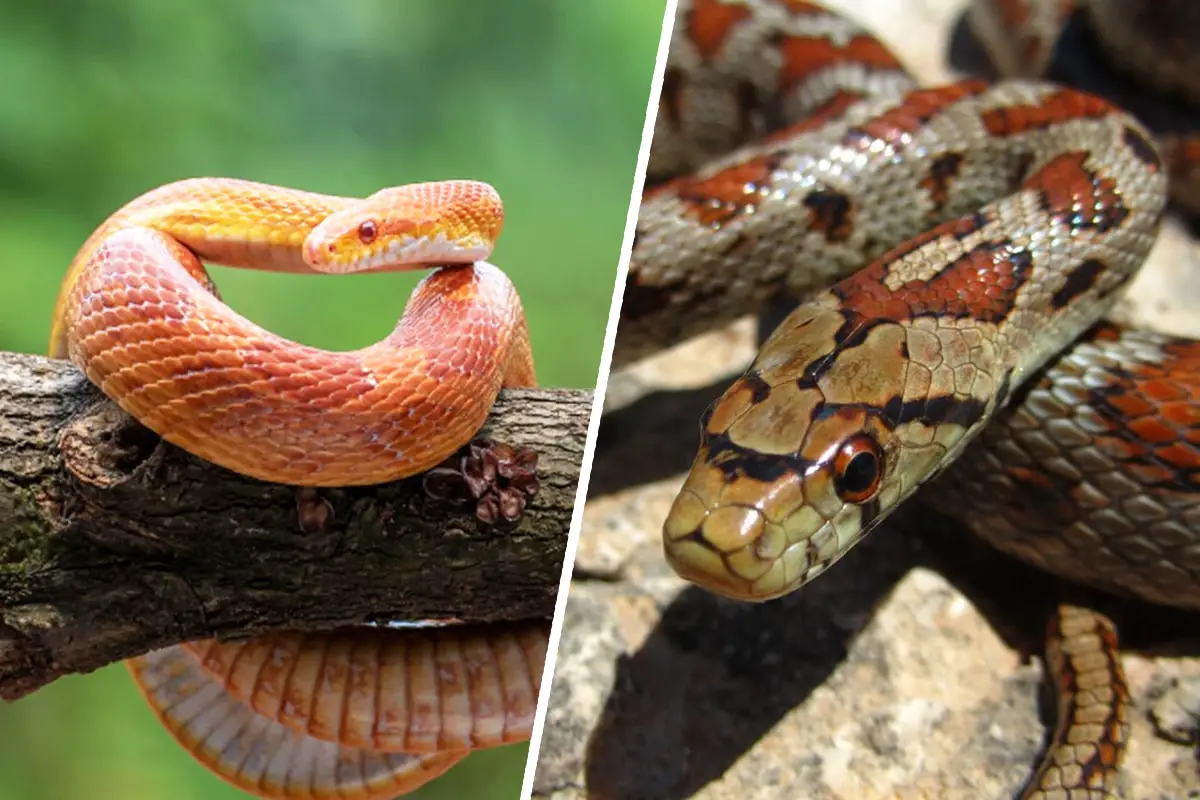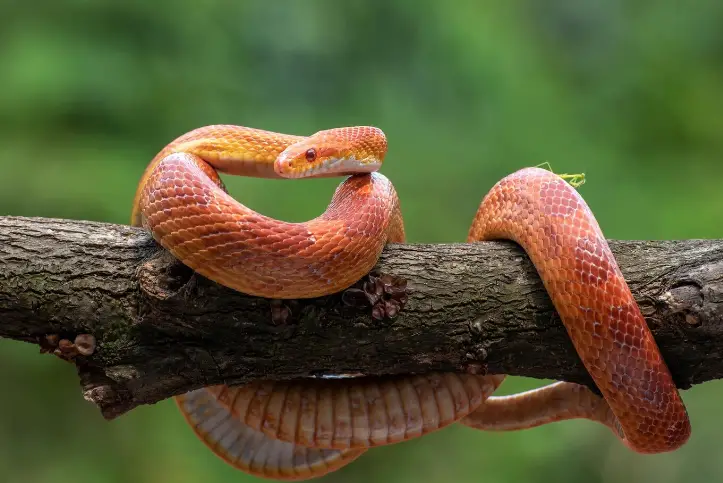Are Corn Snakes Poisonous? The Truth About Corn Snake Bites

Corn snakes are captivating creatures, often misunderstood due to their vibrant appearance. Their non-venomous nature and gentle demeanor make them an intriguing subject for those interested in reptiles. These snakes, with their colorful patterns and curious behaviors, offer a glimpse into a world where appearances can be deceiving, and survival is an art form.
Corn Snakes’ Non-Venomous Nature
Corn snakes, with their striking colors, are often mistaken for venomous species. However, these slender beauties are harmless. They subdue their prey through constriction rather than venom. Though their patterns might suggest danger to the unfamiliar eye, corn snakes lack fangs and venom glands.
These snakes primarily feed on mice and birds. Their friendly demeanor makes them suitable for households, with little risk of bites. Their hunting method is straightforward: they grab prey with their small teeth and squeeze until it’s subdued. This approach is efficient and requires no venom.
Corn snakes are ideal for new snake owners. They thrive on a diet of mice and occasionally eggs. Their gentle nature means they’re unlikely to bite unless they feel threatened. Even then, a bite from a corn snake is more of a warning than a serious injury.
Confusion often arises with their venomous lookalikes, such as coral snakes. However, corn snakes lack the bright fangs or heat-sensing pits found in venomous species. These snakes come in various colors and patterns, thanks to selective breeding. Albino and purple morphs are particularly popular among enthusiasts.
In the world of snakes, corn snakes are relatively docile. They may rattle their tails or pull away when frightened, but these are harmless defense mechanisms rather than signs of aggression.
Physical and Behavioral Traits

Corn snakes possess distinct physical and behavioral traits that set them apart from venomous species. Their teeth are small and uniform, unlike the prominent fangs of venomous snakes. Bites from corn snakes, when they occur, are more about establishing boundaries than causing harm.
Unlike pit vipers, corn snakes lack heat-sensing pits. This means they rely on patience and stealth to catch prey rather than infrared detection. Their hunting style is more about ambush than active pursuit.
Behaviorally, corn snakes are generally calm and non-aggressive. When faced with potential threats, they prefer to retreat rather than confront. This tendency serves them well both in the wild and in captivity.
Their coloration and patterns are particularly noteworthy. Wild corn snakes typically display red saddles and orange hues, while captive-bred varieties come in a wide range of colors and patterns. These variations are the result of careful breeding programs.
Observing a corn snake reveals nature’s ingenuity in creating a creature that combines beauty with a peaceful disposition. Their defensive displays, such as tail rattling, are more bluff than threat, reflecting their non-venomous nature.
Defense and Hunting Strategies

Corn snakes employ stealth and patience in their hunting. They move quietly through their environment, waiting for the right moment to strike. Their forked tongues play a crucial role in detecting chemical signals from potential prey.
Once prey is located, corn snakes use constriction to subdue it. This method involves wrapping around the prey and tightening until it can no longer breathe. While effective against small animals, this technique is harmless to humans.
For defense, corn snakes rely primarily on camouflage and mimicry. Their coloration can resemble that of more dangerous snakes, potentially deterring predators. When threatened, they may vibrate their tails against dry leaves, mimicking the sound of a rattlesnake.
- Primary defense: Camouflage and mimicry
- Secondary defense: Tail vibration (rattlesnake mimicry)
- Last resort: Retreat
These defensive tactics are generally enough to avoid confrontations with predators. If these fail, corn snakes are quick to retreat, preferring escape over confrontation.
The corn snake’s approach to survival demonstrates the effectiveness of non-aggressive strategies. They’ve adapted to thrive without venom, relying instead on stealth, patience, and clever mimicry.
In nature, corn snakes remind us that beauty and danger don’t always go hand in hand. Their peaceful existence and clever survival strategies highlight the elegance of adaptation without aggression. These serpents teach us that sometimes, the most striking creatures are those that live harmoniously, embracing their surroundings with grace and charm.
REFERENCES
